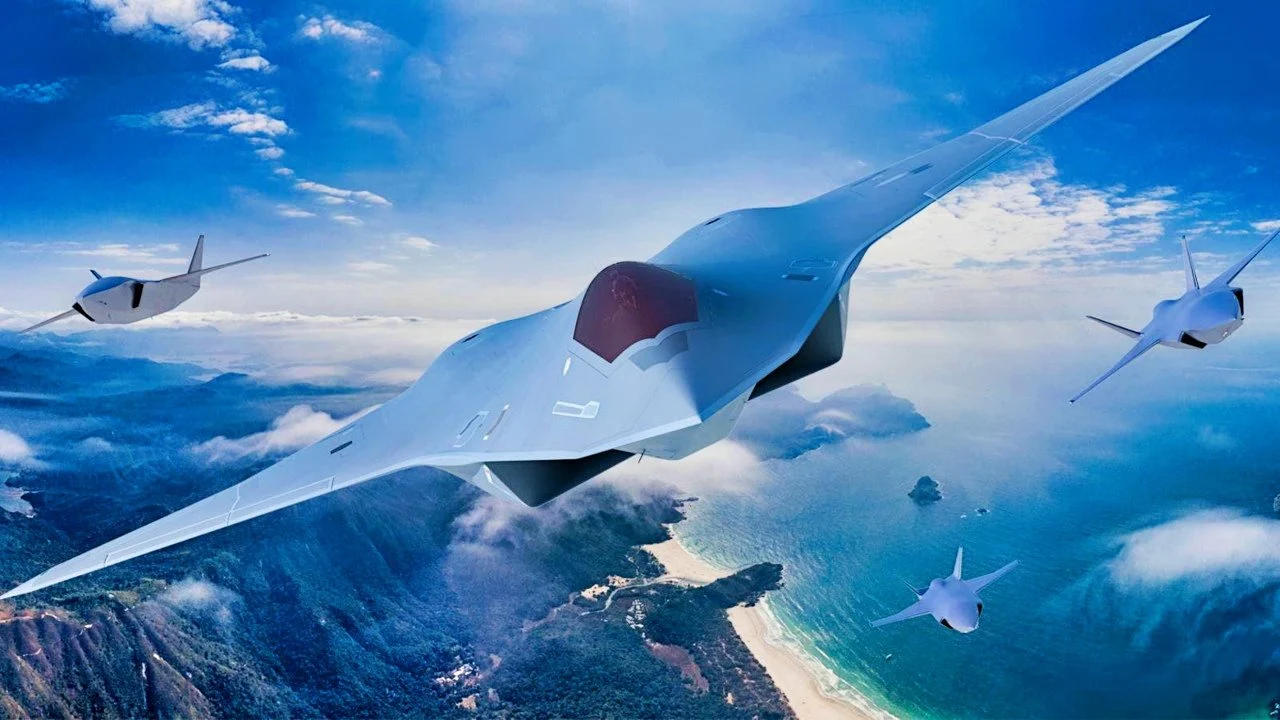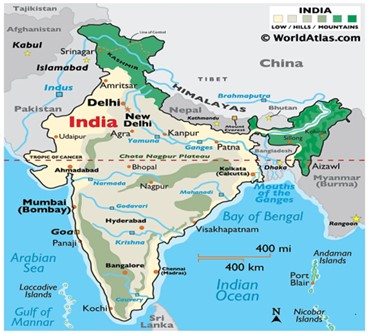
Revamping The Defence Acquisition Process-A Revolution in Procurement Affairs ?
Mon, 23 Aug 2021 | Reading Time: 8 minutes

Revamping The Defence Acquisition Process-A Revolution in Procurement Affairs ?
Brig Arvind Dhananjayan (Retd)
In order to invoke a paradigm shift in leviathan processes, change has to be risk-bearing and revolutionary. Revolutionary because a wanton deviation from established ways of functioning is not readily met and accepted. Risk-bearing in order that the unseen pitfalls that are bound to manifest along the road to change are absorbed without derailing the suggested noveau alternative. It was just such a revelation that the Chief of Army Staff (COAS) made while addressing a webinar on Transformation Imperatives for the Indian Army in the Coming Decades organised by the United Services Institution (USI) on 03 August 2021.
The COAS, in his address, explicitly suggested that the Defence Procurement Procedures needed overhaul to break the shackles of the ‘zero error syndrome’. The COAS further stated that the existing procurement processes have not kept pace with transition to Information-era warfare. In a qualification of this statement, the COAS opined that there was a need to revisit the L1 Concept, wherein contracts are awarded to the lowest bidder- leading in a number of occasions to the Armed Forces receiving products/ systems that are not frontrunners in the material or technology field. In order to fully comprehend the spirit of the COAS’s conviction, it is important to understand in brief the procurement process currently in vogue.
The Defence Procurement Process
Capital procurements for the Armed Forces are governed by the stipulates contained in Defence Acquisition Procedures (DAP)-2020, issued on 01 October 2020 after approval by the Defence Acquisition Council (DAC), the apex decision making body with regard to capital acquisitions, with the Hon’ble Raksha Mantri (RM) as Chairman and the CDS and three Service Chiefs as members, among others.
DAP-2020 aims at streamlining existing procurement regulations to reduce lag-time from Acceptance of Necessity (AoN) stage to induction. The foreword by the Hon’ble RM unambiguously states that the focus of the DAP ‘lies in ensuring that contemporary technology-based equipment is made available to the Services in a time bound manner, to further expedite the modernisation of the Armed Forces’. The RM also mentions that the DAP would focus on ‘Self Reliance’, wherein indigenisation and innovation are enabled through processes of ‘Make’, ‘Design & Development’ and ‘Strategic Partnership’. Based on these principles, DAP-2020 lays out categories for capital acquisitions, some of which have been explained in a previous article @ Chanakya Forum https://chanakyaforum.com/indias-mounted-gun-system-ensuring-future-combat-readiness/ .
While the procurement process is substantially detailed with a number of checks and balances, the very broad procedure of acquisition is laid out in the flowchart below.

Hurdles in L1 Process: From Formulation of SQRs to Single Vendor Imbroglio
The L1 (lowest bidder) Process was aimed at the Armed Forces being provided equipment with the lowest price that meets all qualitative operational requirements and evaluation standards. However, it became evident with the passage of time that this system is plagued by certain pitfalls, elucidated as under.
Inferior Quality. There have been a number of instances wherein the lowest bidder system has turned up equipment/ products of visibly inferior quality or products that emerge inferior post induction, probably as a result of the vendor attempting to cut costs on quality control in order to enhance probability of emerging as the L1 bidder. A factor that seems to play in this imbroglio is the consternation on the part of the vendor that in spite of emerging as L1, the vendor might still have to face the rigours of a Contract Negotiation Committee (CNC), if the L1 bid is above the benchmarked cost of the product/ equipment. ‘Predatory Pricing’ or collusivity between vendors in an attempt to influence the outcome of the L1 bid is another cause for concern. Traditionally selecting a L1 bidder purely on the basis of cost also leaves out the important consideration of weightage for superior technology- an undesirable fact.
Difficulty in Benchmarking. Globally, defence equipment do not have a standardised price index, with costs varying based on location/country of contract and variations in performance parameters (as is the case with operating temperatures in India). Such lack of uniform pricing makes cost benchmarking by the recipient Service extremely difficult and in many cases, results in arbitrary benchmarking. This leads to mismatch between cost expectations/ quotes on the part of the recipient Service/ vendors respectively, leading to delays at the CNC stage.
Inordinate Delays Between AoN and Contract Conclusion. Cost expectation mismatch between recipient Service and vendor could occur at the GS Evaluation Stage, after a long drawn process to reach this stage. This anomaly would again be linked to dichotomous benchmarking by recipient Service or inordinately high cost quoted by the vendor in the Commercial Bid, resulting in protracted negotiations at the CNC stage. Another cause for frequent cost and time overruns is the lofty expectations contained in SQRs. Also, SQRs tend to get redundant due to the lengthy procurement process in the case of niche/ fast changing technologies. This leads to disagreements between vendor(s) and recipient Service regarding possibility of absorbing such changes, resulting in frequent impasses in fructification of RFPs, in Pre-Bid Conferences or at the TEC Stage. Such delays adversely impact contemporaneousness of the equipment when it enters service, due to technology jumps that have taken place during the ensuing period, especially with regard to current niche technologies like drone technology and electronic spectrum equipment.
The Shadow of a Single Vendor Situation (SVS). Lengthening of the procurement process in cases of Ab-initio or resultant SVS, wherein such cases may only be progressed with explicit approval of the AoN according authority, coupled with the shadow of possibility of corruption/ favour that is thrown up in case of SVS, lead recipient Services to tread this path with utmost caution, with all efforts being made to avoid such a situation. This necessitates leaning towards a multi- bidder L1 system, in spite of the disadvantages mentioned in preceding paragraphs.
Alternatives in the Procurement Process
Having enumerated the obvious practical pitfalls of the L1 bidder system, it is important to clarify that a viable alternative would be an inescapable pre-requisite to doing away with this process. While elucidation of a contrary solution would require in-depth scrutiny and extensive field survey of the contours of the present and emerging indigenous and global Defence Industry- an exercise which would take a considerable amount of time and effort, it would be apt to examine available answers in the existing DAP that could assist in overcoming such convolution in case of pressing procurement requirements.
Fast Track Procedure (FTP). FTP is to be utilised for expeditious procurement to meet urgent operational requirements or to obviate protracted timelines experienced in regular acquisition of operationally imperative equipment. Acquisitions under FTP may not form part of the perspective acquisition plan and may be progressed based on Operational Requirements (OR), without the need to undergo the protracted process of formulation of SQRs. Under FTP, contract is to be concluded within 216 days of initiation of proposal by Service HQ and delivery effected within 12 months of signing of contract, thus putting a cap on the open ended delays seen in the normal acquisition process. The extension of FTP to cover niche technology/state-of-art equipment in limited numbers will also greatly relieve pressure on the regular acquisition process. The acquisition of Technical Intelligence (TECHINT) equipment is already covered under the FTP. It is also possible under the FTP to split the source of supply among L1, L2 and L3 vendors, provided L2 and L3 vendors are ready to accept the terms and conditions negotiated with the L1 vendor, thus increasing the vendor base and facilitating induction of technologically superior equipment.
Emergency Procurement (EP). It was for the first time after the Galwan Valley incident in June 2020, that the MoD, based on recommendations of the CDS, accorded sanction for emergent capital procurements upto Rs. 300 Crores. Approval of such EP cases stands delegated down to Service HQ level, thus cutting short the normal procedures for processing/ clearance of such cases. These EP have now been extended upto 31 August this year. EP enables easier and quicker procurement in an ab-initio or resultant SVS scenario, thus significantly reducing procurement hurdles. The scope of such EP could be extended to augment the FTP procurements in obtaining cutting edge operational technologies within an expeditious timeframe.
L1T1 Concept. The L1T1 Concept refers to a provision where the selection of bidder is not restricted to or governed by the lowest cost quoted amongst technically compliant vendors, but would be a combination of low cost and superior technology, or Enhanced Performance Parameters (EPP) met. Such EPP would refer to bids that are technically superior and therefore deliver performance that is superior to the Essential Parameters required to be met by vendors participating in the bid. Meeting of such EPP as laid out in the RFP would entitle the vendor(s) to a maximum relaxation of 10 % from quoted cost, meaning that the bid of a vendor meeting all the EPP would be entered at 10% lower than the quoted cost for the purpose of selecting the L1 bidder, while ensuring that this vendor, if selected under the L1T1 provision, would be paid the original quote / cost arrived at in the CNC. This concept provides additional incentive to vendors of technologically superior equipment who would otherwise be reluctant to submit bids which would have greater cost than other vendors with inferior technology. The L1T1 Concept thus provides an alternative to selection of vendor based strictly on lowest cost (and the concern of inferior quality) and syncs aptly with the push towards the age of superior technology in the Information era, as alluded to by the COAS.
Empowering Indigenous Defence Industry. In order to achieve the aim of self- reliance, there is an imperative need to empower the indigenous Defence Industry Base, including Defence Public Sector Undertakings (DPSUs) and Micro, Small & Medium Enterprises (MSME). In a move that will undoubtedly increase indigenous vendor participation, the DAP has split the Essential Parameters (ESP) of an equipment being sought into ESP A & B. ESP A refers to features of equipment already in service/available in the market and forms the core of the SQRs, while ESP B refers to parameters originally not available in the equipment being fielded, but which can be developed by vendors using available technologies, even post conclusion of contract, within a stipulated timeframe and with a definite surety. This relaxation in time available for fielding equipment with all desired parameters can be optimally exploited by the DPSUs and private Defence vendors to meet Service requirements of contemporary technologies.
Under Make-I (Government Funded) Category of DAP-2020, MoD can finance upto 70% of prototype development cost or maximum of Rs. 250 Crores per Development Agency (DA), in a phased manner based on progress of development. This provision must be exploited by the Innovation & Indigenisation Organisations of the Service HQ (mandated for establishment by each Service HQ in DAP-2020) to identify suitable projects/vendors to boost indigenous R&D. Additionally, projects under ‘Make’ Categories with AoN ≤ Rs. 100 Crores is reserved for MSMEs & Startups, proviso that there are two or more vendors participating in the tender.
While the requirement of cutting-edge technology towards modernising the Armed Forces is well understood, acquisition of bulk equipment categories which have lower technology dependence could be considered for relaxation of L1 cost (akin to L1T1 Concept) under the Buy (India- IDDM), Buy (Indian) or Buy & Make (Indian) categories, in that order, to encourage indigenous vendors to participate in tenders.
In the words of the COAS, there is an imperative need for a ‘revolution in bureaucratic affairs’ to cut red-tapism and shorten protracted timelines that have long been the scourge of the acquisition process. The ‘Information Era’ needs the Armed Forces to have cutting-edge and contemporary technologies that cannot only be purely governed by archaic regulations such as the ‘L1’ process, which need to be reoriented to meet such technology demands.
**************
Author

Brig Arvind Dhananjayan (Retd) has commanded an operational Brigade and has been Brigadier- in- charge Administration in a premier training facility. He has had exposure abroad on deputation to Botswana, Southern Africa as member of an Indian Army Training Team and has had extensive exposure in mentoring of Defence Forces overseas. He possesses vast instructional experience, imparting instructions in both technical aspects and tactical application of weapon systems.
****************
Reference for image- DAP-2020
Disclaimer
The opinions expressed in this article are the author’s own and do not reflect the views of Chanakya Forum. All information provided in this article including timeliness, completeness, accuracy, suitability or validity of information referenced therein, is the sole responsibility of the author. www.chanakyaforum.com does not assume any responsibility for the same.
Chanakya Forum is now on . Click here to join our channel (@ChanakyaForum) and stay updated with the latest headlines and articles.
Important
We work round the clock to bring you the finest articles and updates from around the world. There is a team that works tirelessly to ensure that you have a seamless reading experience. But all this costs money. Please support us so that we keep doing what we do best. Happy Reading
Support Us




















POST COMMENTS (0)